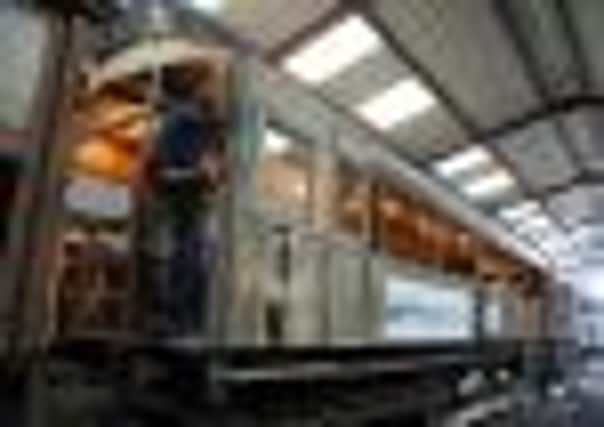Brambles hid railcar named desire


The derelict “house”, hidden by foliage and with an old tin roof and veranda, was hardly recognisable as a train but turned out to be in remarkable condition when it was rescued by railway carriage restorer Stephen Middleton.
It had been used as a holiday home in Kirkbymoorside, North Yorkshire, from the 1930s to the 1970s but had seen better days.
Advertisement
Hide AdAdvertisement
Hide AdMr Middleton turned up at the field and could hardly believe his eyes.
“You would hardly know under the foliage and undergrowth that there was a train underneath,” he said.
“I could not believe my eyes as we hacked away the brambles to reveal the body in remarkable condition.
“Entering for the first time was like going in to time capsule, with etched glass and curtain rings still intact.”
Advertisement
Hide AdAdvertisement
Hide AdTrain No. 3170 turned out to be a remarkable find, a pioneering “railcar” which was arguably “the grandfather of modern trains” and possibly more important that the Flying Scotsman.
The York-built train was the world’s first to be powered by a petrol-electric engine, a forerunner of today’s modern trains.
Harrogate-based Mr Middleton rescued the railcar in 2003 following a tip-off from a friend and set in motion a painstaking quest to piece together the history of the railcar and find parts to bring it back to life.
Now the train, which was built by the North Eastern Railway in 1903, is the subject of a major restoration project funded by £465,000 from the Heritage Lottery Fund.
Advertisement
Hide AdAdvertisement
Hide AdWhen complete, the train will carry passengers, in Yorkshire, for the first time in over 80 years.
Work has started at Embsay, near Skipton, to restore the train to its former glory, with a restored body and a new engine, generator, controls and brakes.
Volunteers are currently being sought to help with all kinds of work, from fitting and woodworking to painting and welding.
One of the volunteers, Simon Gott, said: “In terms of its history, it is unique and very significant. When complete, there will be nothing else like it. It is the grandfather, or the great-grandfather, of modern passenger trains and in railway heritage terms could be more significant that the restoration of the Flying Scotsman.
Advertisement
Hide AdAdvertisement
Hide Ad“The technology it used was developed into diesel-electric power, which is used by many of today’s trains. It was based at Starbeck shed during the early 1920s, operating local services around Harrogate.”
Mr Gott, who publicises the work of the charitable trust responsible for the restoration, says the North Eastern Railway petrol electric train had a maximum speed of just 36mph.
“The railcars were popular with passengers and described as ‘cosy’, with curtains at the windows, radiators and electric lighting.
“There were 48 upholstered reversible seats, another similarity with contemporary tramcars. With their wide windows and narrow roof pillars, they also had better visibility than many railway carriages of the time. They could be driven from either end, just as with today’s units. The NER called them Autocars.”
Advertisement
Hide AdAdvertisement
Hide AdOnly two Autocars were made and both were withdrawn in 1930.
Officially, No. 3170 worked the Selby to Cawood branch after 1923; however, some archive photographs suggest it was used around Harrogate for some years afterwards.
The charitable trust plan to restore the autocar together with a 1904 built NER Autocoach.
The trust hopes to use them for educational purposes. Visit www.electricautocar.co.uk
A company that never stood still
Advertisement
Hide AdAdvertisement
Hide AdThe NER was an enterprising railway company receptive to new ideas.
It operated the urban network of lines in Tyneside which later became the Newcastle Metro and developed electric trains to work these lines.
In 1902 two experimental railcars were ordered. These were built at the York Carriage Works, completed in May 1903 and numbered 3170 and 3171.
The railcars were a little shorter and lighter than today’s units, at 53.5 feet long and weighing around 35 tons.
The engine room occupied a quarter of the length of the unit, with a petrol engine which generated electricity to power the traction motors mounted on the bogie underneath.